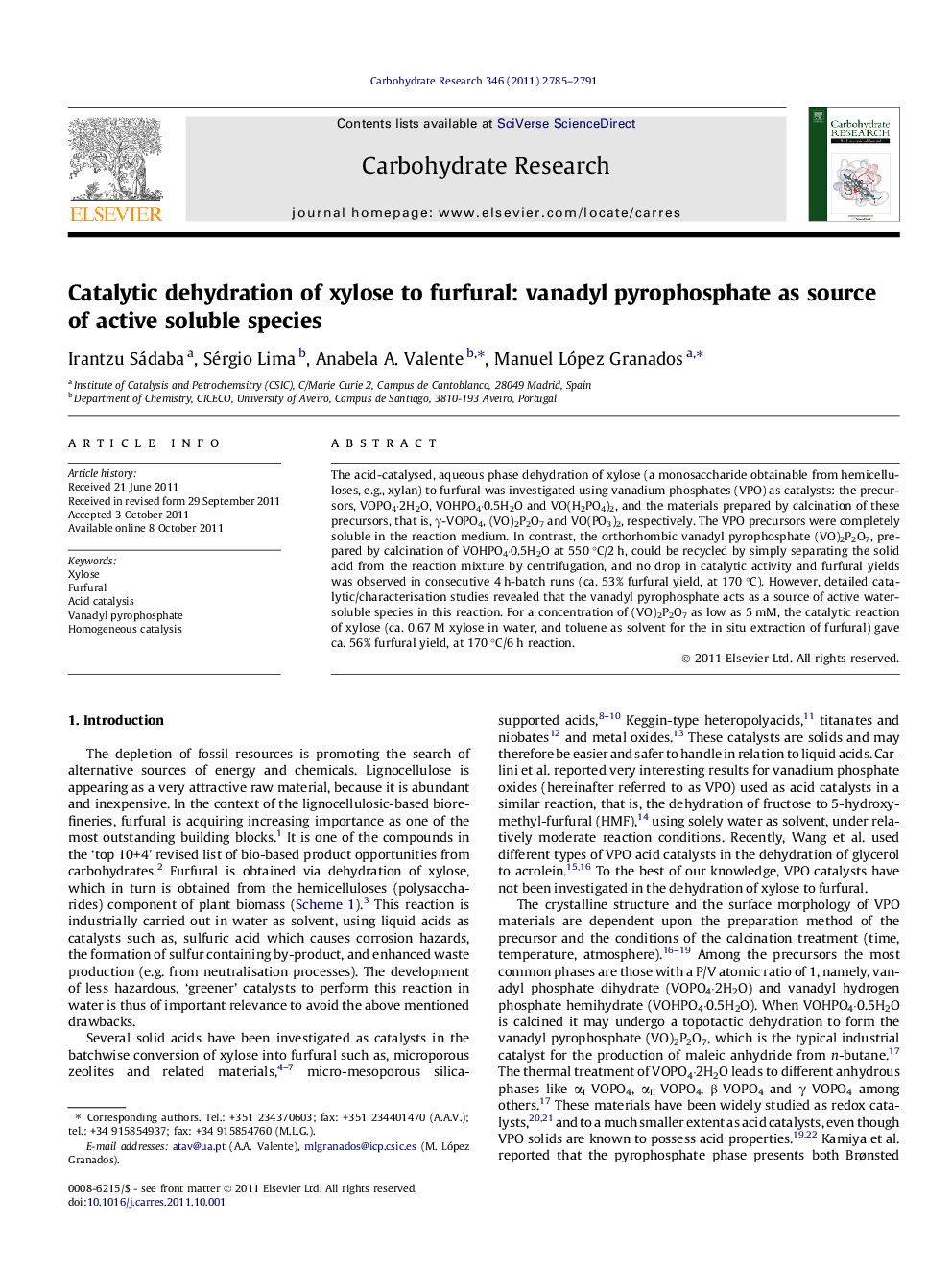| Article ID | Journal | Published Year | Pages | File Type |
|---|---|---|---|---|
| 1390435 | Carbohydrate Research | 2011 | 7 Pages |
The acid-catalysed, aqueous phase dehydration of xylose (a monosaccharide obtainable from hemicelluloses, e.g., xylan) to furfural was investigated using vanadium phosphates (VPO) as catalysts: the precursors, VOPO4·2H2O, VOHPO4·0.5H2O and VO(H2PO4)2, and the materials prepared by calcination of these precursors, that is, γ-VOPO4, (VO)2P2O7 and VO(PO3)2, respectively. The VPO precursors were completely soluble in the reaction medium. In contrast, the orthorhombic vanadyl pyrophosphate (VO)2P2O7, prepared by calcination of VOHPO4·0.5H2O at 550 °C/2 h, could be recycled by simply separating the solid acid from the reaction mixture by centrifugation, and no drop in catalytic activity and furfural yields was observed in consecutive 4 h-batch runs (ca. 53% furfural yield, at 170 °C). However, detailed catalytic/characterisation studies revealed that the vanadyl pyrophosphate acts as a source of active water-soluble species in this reaction. For a concentration of (VO)2P2O7 as low as 5 mM, the catalytic reaction of xylose (ca. 0.67 M xylose in water, and toluene as solvent for the in situ extraction of furfural) gave ca. 56% furfural yield, at 170 °C/6 h reaction.
Graphical abstractFigure optionsDownload full-size imageDownload as PowerPoint slideHighlights► The dehydration of xylose into furfural is effectively carried out in the presence of vanadium phosphates catalysts. ► Based on catalytic tests and solid state characterisation, (VO)2P2O7 is a fairly stable solid acid. ► (VO)2P2O7 is a source of active water-soluble species. ► A concentration of (VO)2P2O7 as low as 5 mM, gave ca. 56% furfural yield, at 170 °C/6 h reaction.
